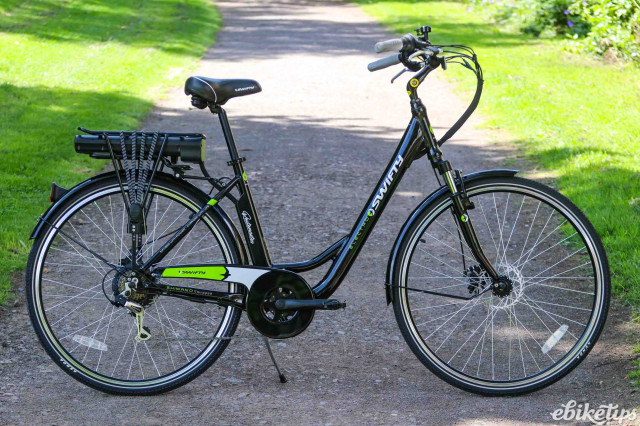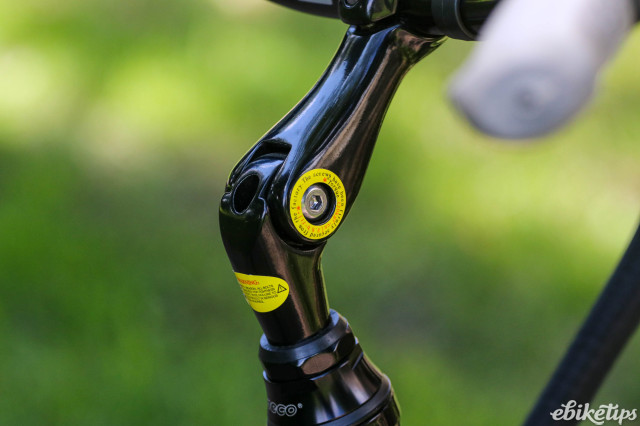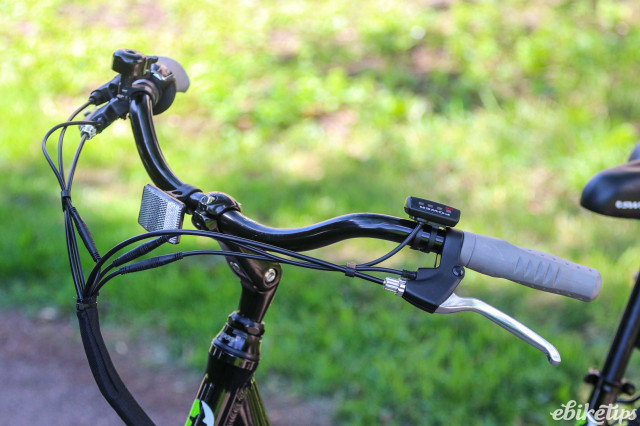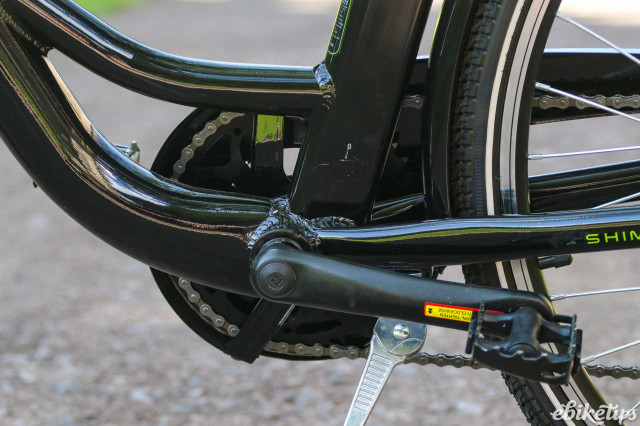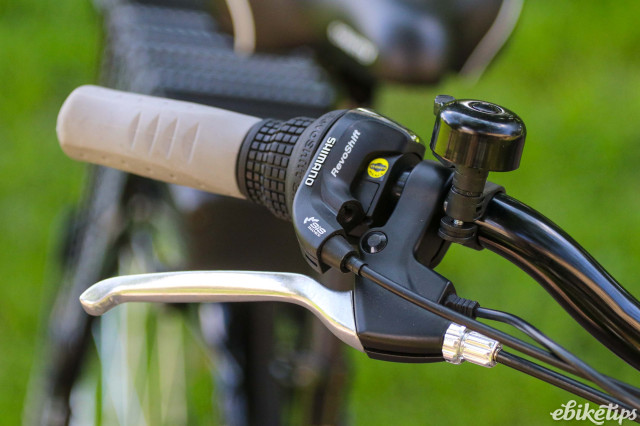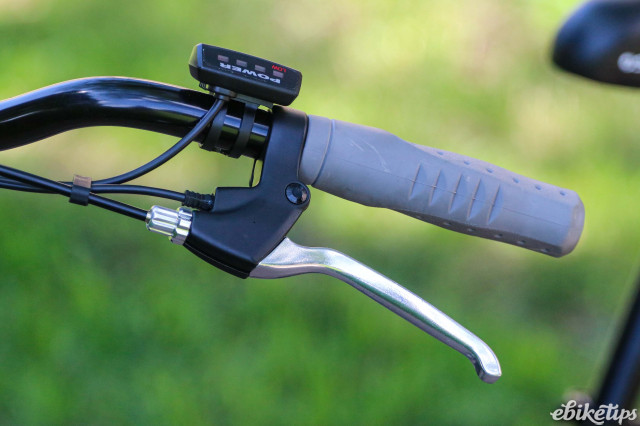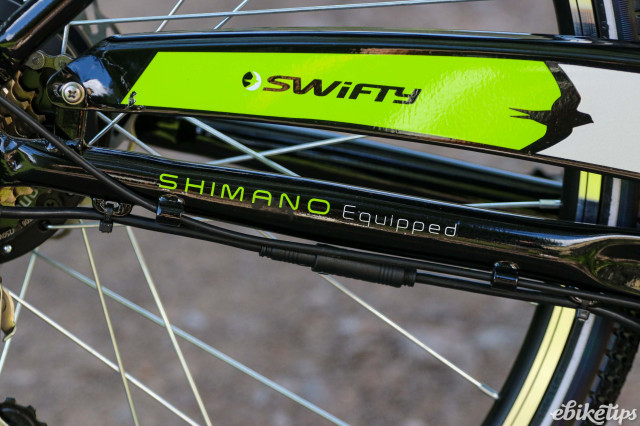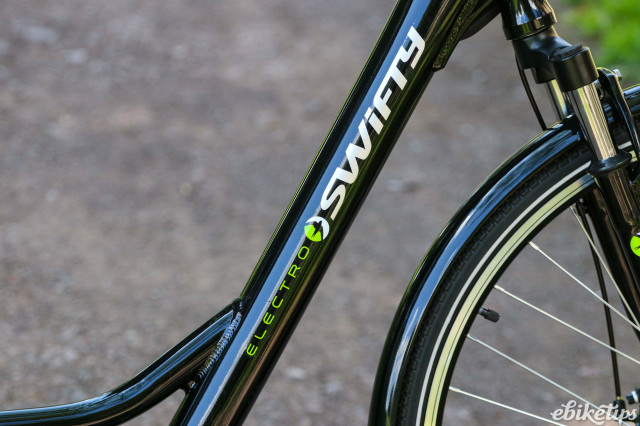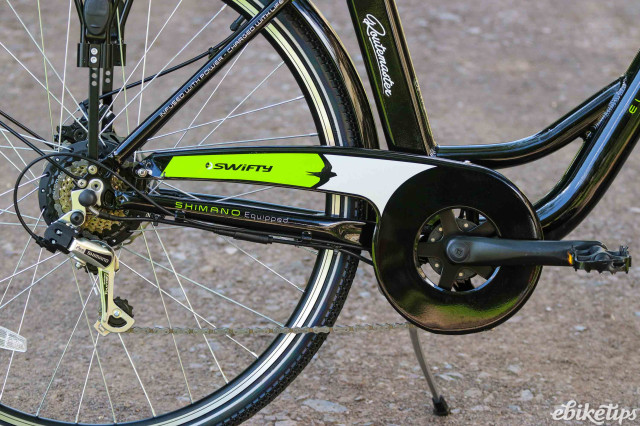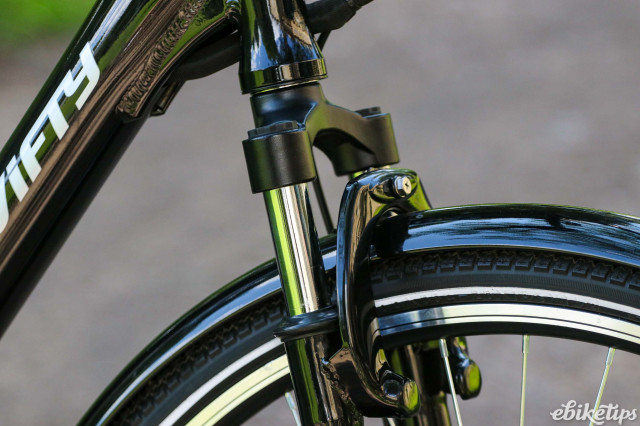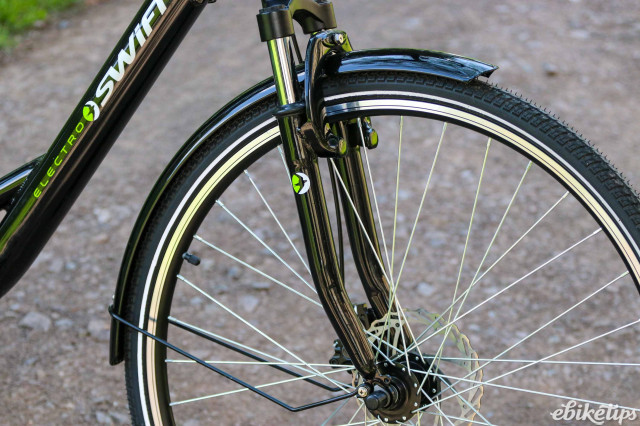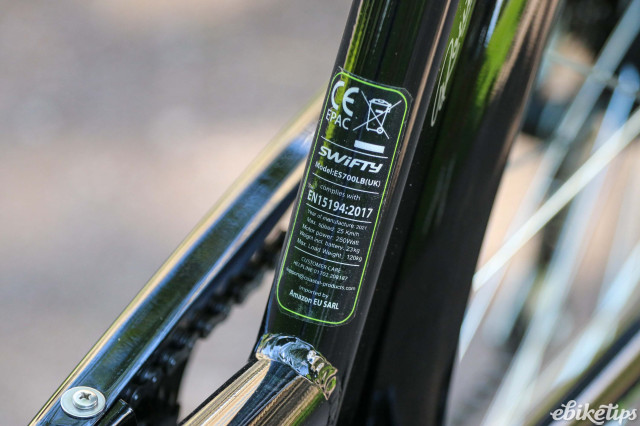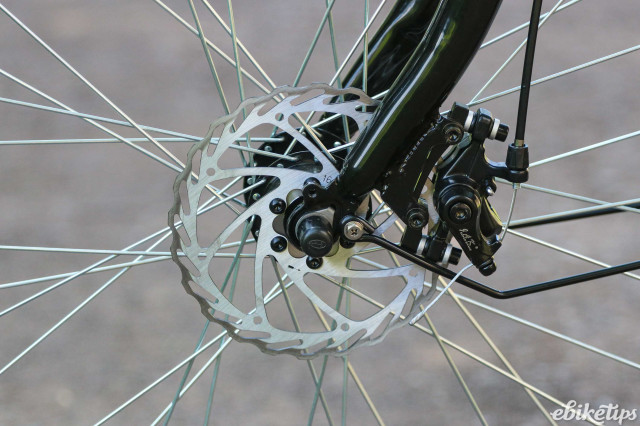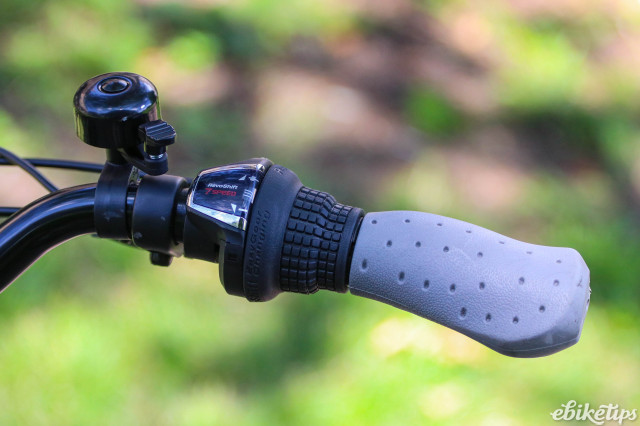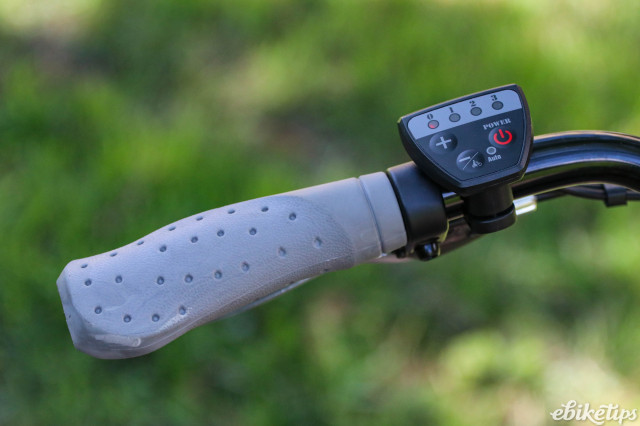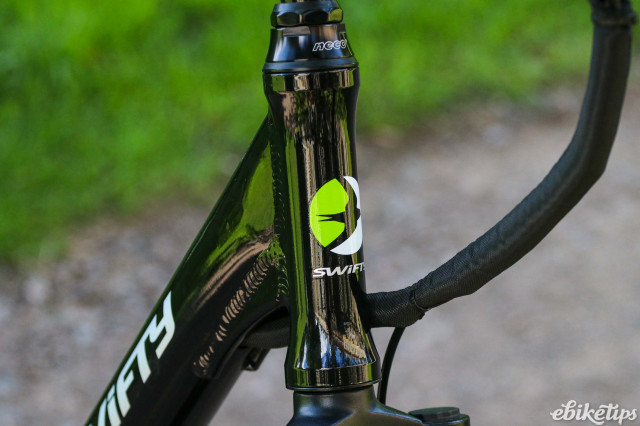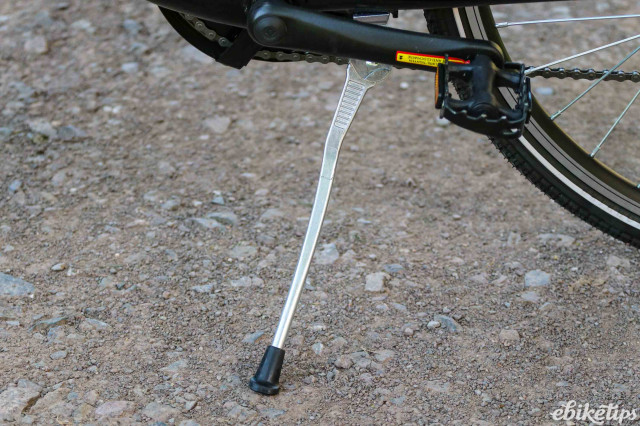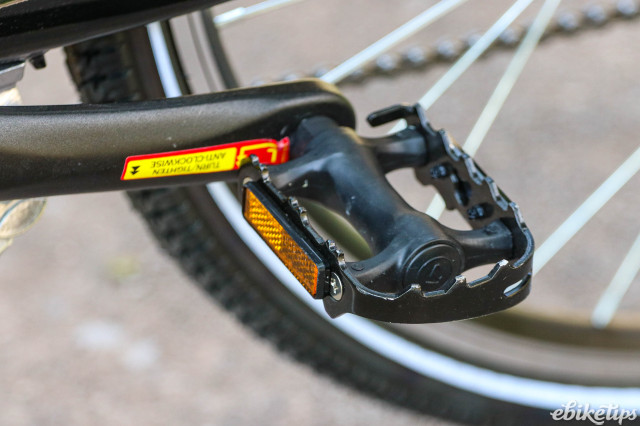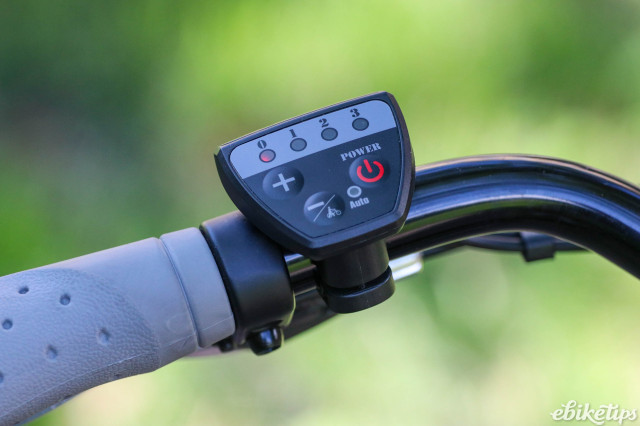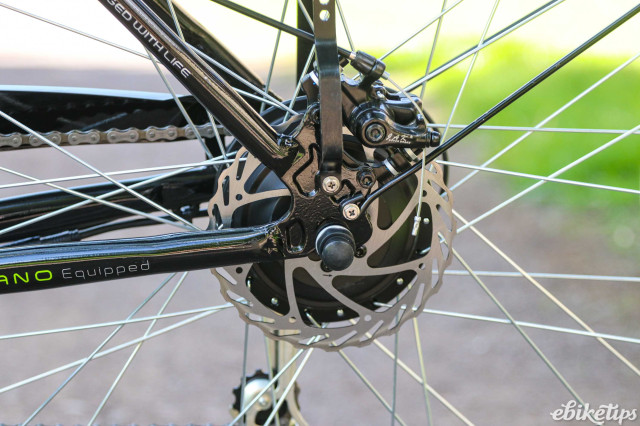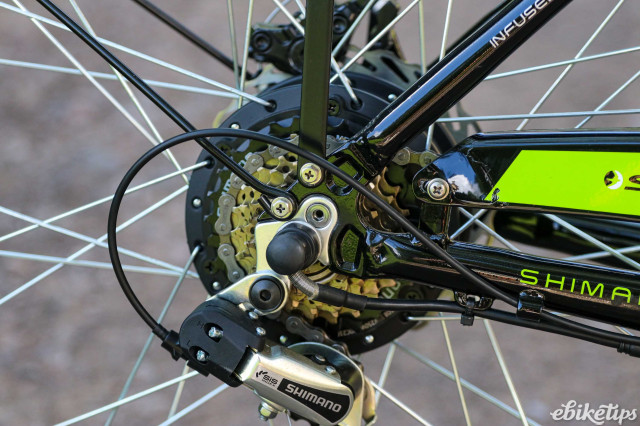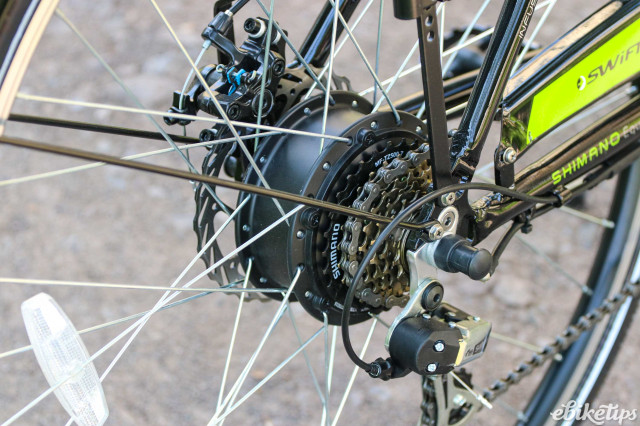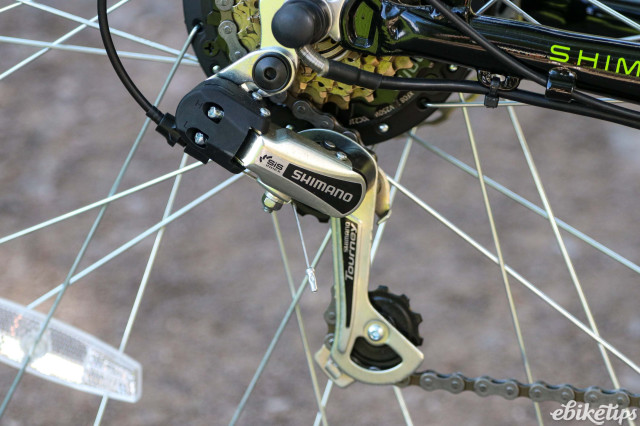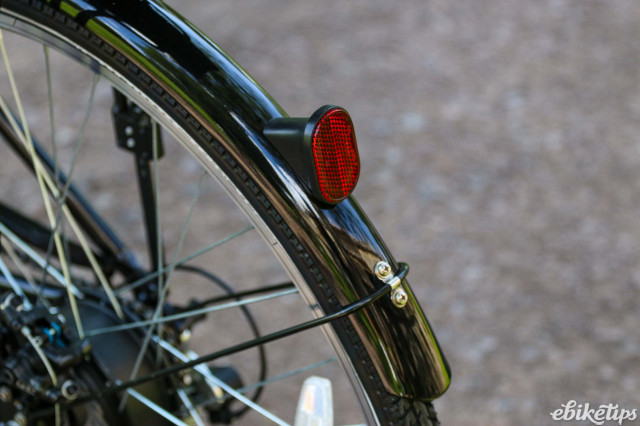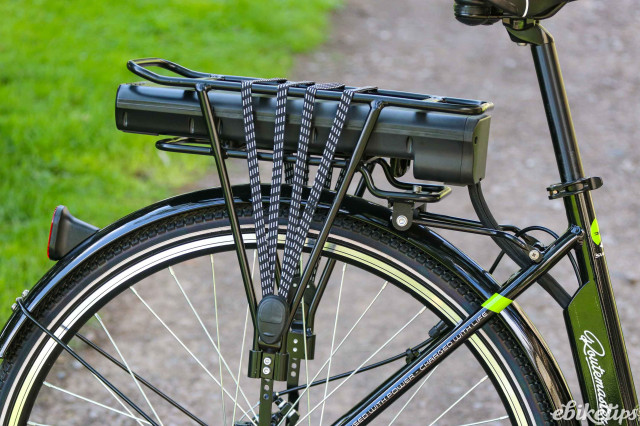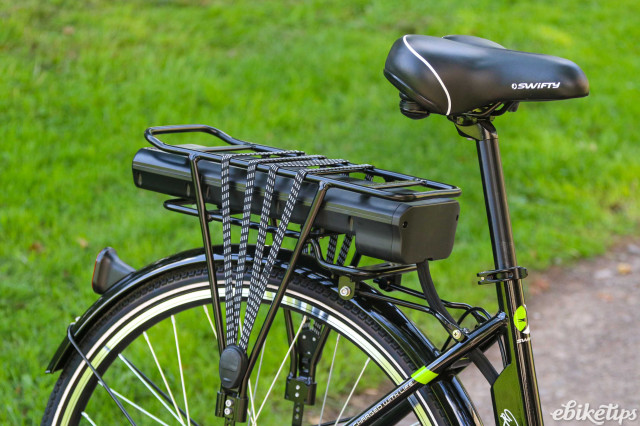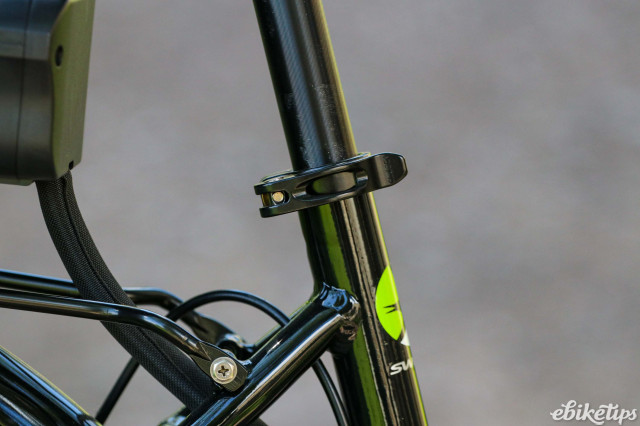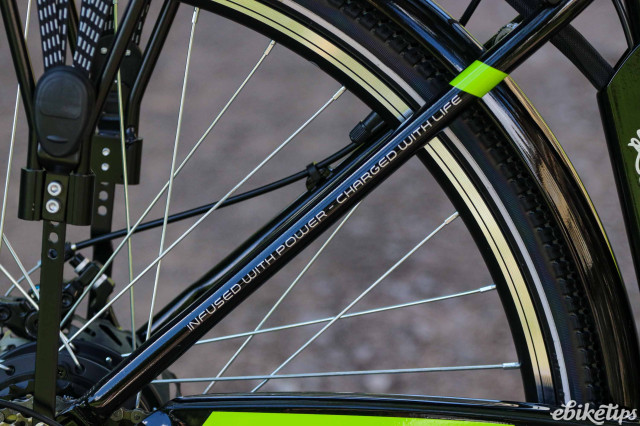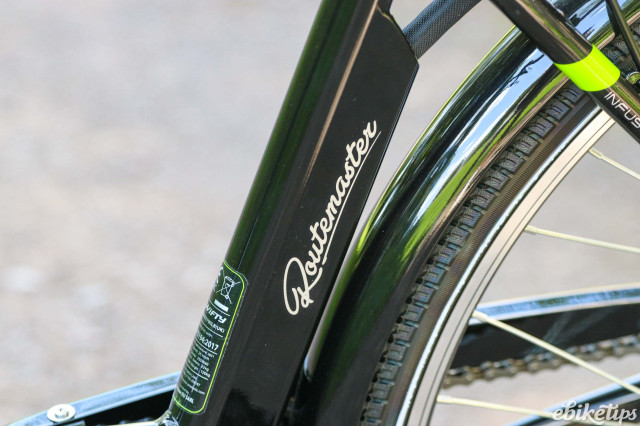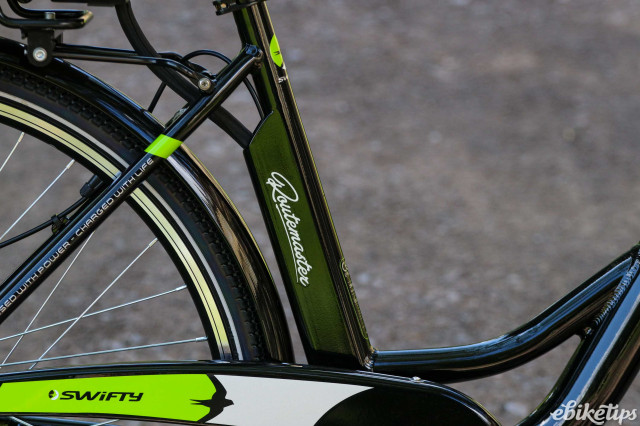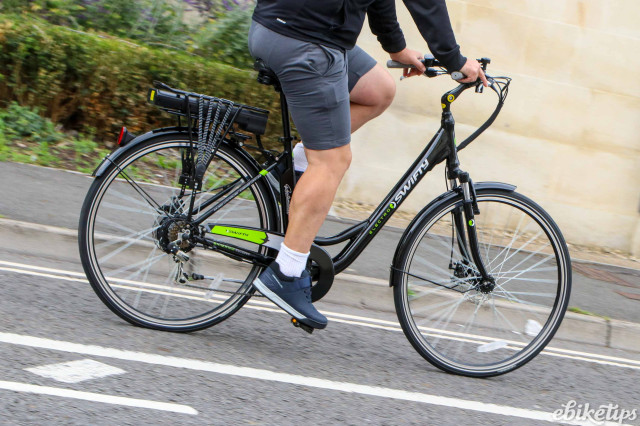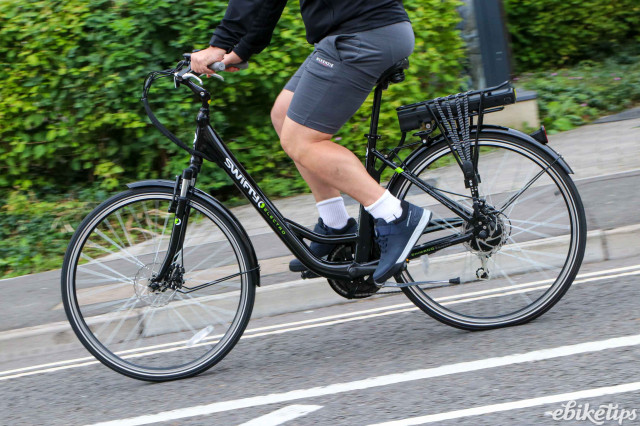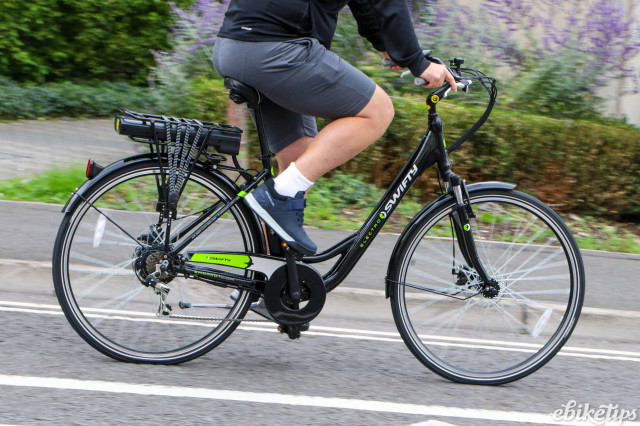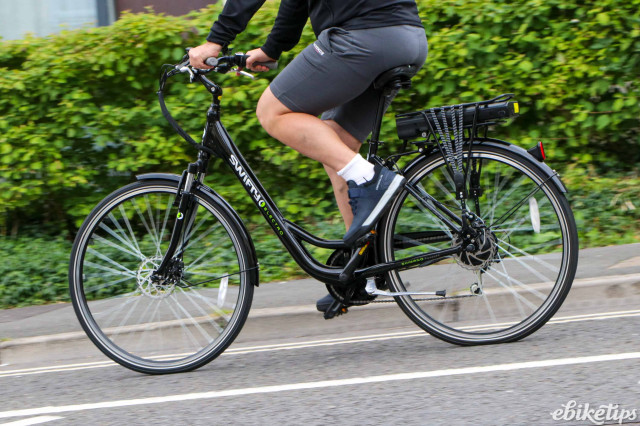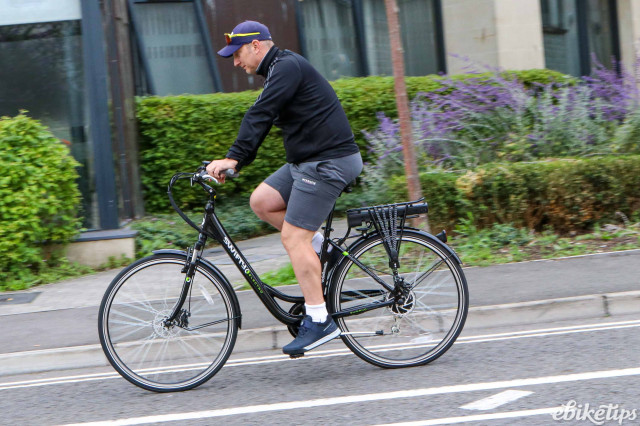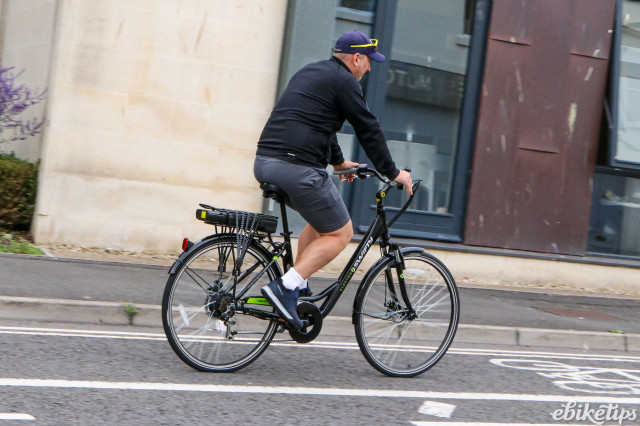Swifty Routemaster
Overview
- Adjustable contact points
- Good value at discounted price
- Durable tyres
- Cheap components throughout
- A lot of flexibility in the stem
- Poor brake performance
Cheap and reasonably cheerful is how I’d describe the Swifty Routemaster, and to be fair that is exactly what a lot of people want, especially for those shorter journeys to work, across town etc. With an RRP of £690, and currently a discounted price of £655.50 via Amazon (Swifty’s website directs you there to purchase) the Routemaster is one of the cheapest e-bikes I’ve ever ridden by some considerable margin, but it’s not the worst.
Specification and the ride
In the box you’ll find an aluminium frame, front suspension fork, 700c wheels, rack mounted battery and a range of components ideally suited for getting out on the lanes or criss-crossing your way across more urban areas.
The frame itself is pretty basic with relatively crude welding, but it looks well built and everything looks to be running true and straight. It’s got a decent amount of stiffness though to cope with the torque and power of the motor, plus the paint is hardwearing, so it’ll stand up well to being locked to railings and racks.
The seat tube has a hollow ‘fairing’ section to run the cables from the battery to the motor which keeps everything neat and tidy and as you can see in the pictures, there are mounts for full mudguards and a rack. Although there are no bottle cage mounts on the frame anywhere, so on hot days you may find yourself getting a little parched.
There is just one frame size on offer and the saddle height can be run from 830mm up to 1030mm measured from the top of the saddle to the top of the pedal in its lowest position, in line with the seat tube.
You get a quick release seat clamp which gives you easy adjustability, and the front end is versatile too. The Routemaster uses a quill stem set up as opposed to an Ahead-style system where the stem clamps around the fork steerer tube as it exits the head tube.
A quill stem sits inside the steerer tube, and its design means that you do get a decent amount of vertical adjustment, plus the stem section itself is adjustable to give you even more height if necessary.
In terms of riding, the Swifty is a pleasant place to be overall. The saddle is plush, which helps soak up the bumps at the rear and you have that basic suspension fork at the front to do the same. It works on big bumps like potholes or low kerbs, but the shocks don’t move fast enough to smooth out ripples in the road.
The rubber compound used for the grips is very firm though, so vibrations are noticeable through your hands and wrists. Not a major problem for short rides, more so on longer trips though.
One thing that I did find a little disconcerting though is the amount of flex in the stem due to the adjustability. Nothing ever moved out of position or felt loose. There are just a few millimetres of play there that gives a vagueness to the steering.
Other than that though, there is little to fault for this kind of money. The Swifty doesn’t feel as heavy as some bikes do, even with the weighty battery sitting high up on the bike, which means that it corners confidently and cuts through traffic easily.
The tall upright riding position helps here too, allowing you to look over the traffic or enjoy the scenery when riding in the countryside.
The tyres use a hard compound and a steel rim bead construction, so they feel pretty lifeless and don’t give the most supple of rides, but that is offset by their reliability and durability which I’d say are the more beneficial qualities to have here.
It’s the same with the wheels really – not light but durable overall. The Swifty is very much a ‘just-get-on-and-ride’ kind of bike.
The main reason you are going to be buying this bike though is the power unit and like with the rest of the bike it’s not the most refined component on the market, but more than capable for this money.
The motor puts out the maximum permitted 250W, while the battery is a 275Wh unit offering a claimed range of 35 miles.
As with anything like this, there is no exact range as there are so many variables, like what power mode you are using, how hilly the terrain is and ambient temperature, but I got around 25 to 30 miles out of the Swifty generally on flatter routes and toggling between the modes. Use it on full and you’ll be looking at 10-15 miles.
You have three modes on offer, which are controlled by the handlebar unit with simple + and - button presses, while a press and hold of the latter will give you a small amount of assistance when you are walking.
The motor is mounted in the rear hub and the power delivery is smooth up until the 15.5mph cut off. There is a slight delay between the pedals moving and the motor responding. Not so much of an issue when accelerating or moving from a standing start, but a bit more of a pain when you are coming to a stop as you’ll get a second or two of power – a bit of bum tightener when something stops in front of you suddenly.
The brakes don’t help. They work okay, but being cable operated calipers, they lack the power and modulation of hydraulic units. They are safe enough though – just plan your braking in advance and ride to their limitations. At least being discs you get the same performance wet or dry and you can improve their performance by adjusting the cables once they have stretched after the first couple of rides. You could even change the pads to something of a better quality.
To work alongside the motor from a go point of view, you also get a 7-speed gear range. It’s GripShift which means you twist the lever on the handlebar to change up or down the gears. It’s not the best solution – every setup I’ve ever used is mediocre at best – and it’s not the easiest to use either. It is cheap though, which is why you see it on many lower end bikes for adults and kids.
Using the motor largely negates the need for gears though to be honest, so it’s not a massive deal.
Value
So, the important bit… value.
As mentioned above Swifty sell their range of bikes through Amazon and like most things on the site prices fluctuate. At the time of writing, it has an RRP of £690, with a 5% discount to give a purchase price of £655.50.
It's cheap, and it does feel like a cheap bike too compared to others which are a few hundred quid more.
For £345 more you could go for the B’Twin Elops 900e which Dave was impressed with overall. Like the Swifty it uses a GripShift gear setup, but you do get extras like a digital display unit for the motor and built in lights.
Carrera’s Subway E can also be had for around the grand mark and it is a much more capable, solidly built bike than the Swifty. You also get a digital display for the motor and quality Tektro brakes.
If your budget is below the four-figure mark, then we have a rundown of the best e-bikes for under £1,000 here. The recently-reviewed Gin X will probably make it onto that list next time we update it as well.
To sumarise, I'd say that you'll struggle to find many bikes cheaper, but you are getting what you pay for here. So yes, the price is low, but taking everything into account and considering what you are getting for the money the actual value isn't amazing.
Conclusion
I’d say the Swifty Routemaster is ideal as an ‘occasional ride’ – something to jump on to pop to the shops, or for a very short commute, even a ride of 10 to 15 miles in the lanes – but for anything else there are too many compromises in terms of kit quality and performance which would make me think twice.
If you want a bike that can seriously replace short journeys that you’d normally do in the car, or is a pleasure to ride for fitness or general tasks then it’s definitely worth spending a bit more if you can.
